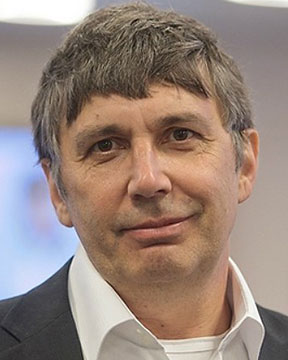



















This new process makes possible the gasification of any pulverized coal waste in a suspended layer of slag and produces a synthetic gas, various metals that are simultaneously reduced from the coal ash and a highly porous aluminosilicate slag-microspheres that can be used in various fields. The input stream consists only of coal from waste and other reactants, including oxygen for burning the coal are obtained internally within the same process flowsheet.
This process is based on the previously developed jet-emulsion reactor technology SER, intended for direct reduction of pulverized metallurgical wastes and ores. It is a sustainable process since it does not produce any waste and is energetically self-sufficient. It can also be designed in a mobile version that can be placed near waste generation sites or in remote places from electrical networks.
Manufactured cement has to comply with the requirement of containing less than 0.60% sodium oxide equivalent (Na2Oeq) to meet the standard alkali content specified by codes of practices worldwide, such as ASTM C150 [1]. This limit has been adopted since the 1940s for the purpose of preventing deleterious expansion due to alkali-silica reaction (ASR), which has the potential to compromise the mechanical performance of concrete structures in service. Limiting the amount of sodium and potassium alkalis in cement is one method of lowering the alkali content [2]. However, raw materials used to manufacture cement may often contain alkali contents exceeding this limit. These raw materials are thus often discarded for use in cement manufacture. Another challenge to contend with is the need to conserve naturally occurring resources. Therefore, alternative solutions proposing the use of industrial by-products raw materials need to be considered [3].
The use of supplementary cementitious materials (SCMs), like fly ash and slag, generated as industrial waste can be recycled in blended cements [4], which provides a viable option for lowering the alkali content of cement permitting the use of raw materials that would otherwise be discarded to landfill. This paper reviews the advantages of using SCMs to lower the alkali content of cement and allow a wider range of raw materials to be employed in cement manufacture whilst conserving natural resources and decreasing the CO2 emissions associated with cement manufacture [5].
A successful development of the Bayer-Hall-Héroult process (pot amperage-600kA, power consumption-12,500kWh/t, and current efficiency-95%) during the past 20 years has been significant for pre-baked anode smelting efficiency, which is close to peak performance. It is obvious that under the circumstances, even the slightest increase of any indicator requires such huge costs that they might never be recouped, considering growing prices of raw materials, energy, and transportation. At the same time, there are pending issues with greenhouse gas pollution and contamination of land and water with red mud and spent pot lining.
In this environment, it is logical to address well-known technologies which have not been practiced for various reasons. Among them are: low-consumption and bipolar electrodes[1], electrolysis of aluminum chloride through chlorination of non-bauxite aluminum containing ore (Toth Aluminum Corporation)[2], carbothermal production of alumosilicic alloys from sillimanite, caoline and others.
The current studies have proven that the main problem with commercialization of the low-consumption electrodes is that it has been tested on a classic pot design with horizontal carbon anodes, whereas changes in mass and heat transfer require a new pot design, alumina, and current feeding as well as MHD control. Unfortunately, sporadic tests on cells with vertical and bipolar electrodes, with low-melting bath and alumina suspensions have not become pilot. The same happened to electrolysis of aluminum chloride: alumina chlorination issues unsolved by Alcoa and All-Russian Aluminum and Magnesium Institute (VAMI) stopped further development of the advanced technology right when Toth Aluminum Corporation announced and Fluor Daniel confirmed a technical feasibility of the aluminum chloride production by chlorination of low-quality alumina containing ore (caoline, sillimanite and others). This problem remained unsolved in the Alcoa-VAMI technology. In this regard chlorination of high-silicon ore and smelting of chloroaluminate is an interesting process researched by Academy Fellow А. Marakushev [3].
The carbothermal process developed by VAMI to produce alumosilicic alloys was used in the USSR in 1980s [4]. The advantages are as follows: there is no expensive alumina refining and caustic/ acid mud stacking in the cycle; there are no costs on production of expensive electrode materials; there are no transportation costs associated with bauxite mining, delivery and processing, which reduces aluminum cash cost; CAPEX on construction of the alumosilicic alloy carbothermal area is minimal compared to costs on construction of alumina production and smelting area with the equal capacity.
The use of the carbothermal process to produce primary alumosilicic alloy will help build up aluminum and aluminum-based production, and will reduce emissions significantly. RUSAL, one of the largest aluminum companies in the world, addresses these and other subjects by investing hundreds of millions of dollars every year into the environment and acting as a global leader in the reduction of GHG emissions and production of low carbon aluminum.
The report will cover projects RUSAL is implementing or has implemented in relation to topical issues associated with alternative production of aluminum and value-added products, including scandium alloys, mud stacking and aluminum waste processing.
Effects of flux, vulcanizing agent and reductant on slag cleaning in new-type slag cleaning furnace (Φ3.6×8.1m) were investigated under the conditions including smelting temperature of 1200°C and 1250°C, settling time of 30 min and 60 min, and Fe/SiO2 of 1.7-1.9. The results show that addition of SiO2, B2O3 or CaF2 into original copper smelting slag can improve settling separation effect. Though no effect on copper recovery, addition of FeS can provide heat required by reaction with oxygen and reduce copper dissolution in spinel phase and slag. Copper content in discarded slag can be controlled at 0.26% under the optimum comprehensive conditions with ratio of oxygen to natural gas of 1.6.
Keywords: Copper; Non-Ferrous; Recovery; Slag; Technology; Temperature;Rare-earths have many applications in the high-technology industry, especially for magnets and luminescent phosphors, which are also important for lasers and optical fibers. This paper reviews the current trends of the market, wherein a crisis emerges: although the typical rare-earth ore - monazite - has ~45% Ce, 30% La, 15% Nd, and 5% Pr, cerium and lanthanum are at 1/25 of the price of neodymium. Elements as Cerium and Lanthanum often do not have a market and need to be stockpiled by the mining companies. Thus, the rare-earth market is now driven my magnets, and elements such as terbium, dysprosium, and holmium are among the most needed by the market, besides neodymium and praseodymium. Until recently, europium was strongly used as phosphor in all TVs, including plasma TVs. But now LED TVs obtain white color principally by mixing blue LED and a yellow phosphor that uses the cheap yttrium and cerium. In this presentation, a review of the present situation of the Brazilian rare-earth industry [1], and methods for rare-earth reduction, are provided.
Keywords: Cerium; Extraction; Magnet; Ore; RareEarth;Blast furnace and cupola furnace are furnace aggregates used for pig iron and cast iron production. Both furnace aggregates work on very similar principles: they use coke as the fuel, charge goes from the top to down, the gases flow against it, etc. Their construction is very similar (cupola furnace is usually much smaller) and the structures of pig iron and cast iron are very similar too. Small differences between cast iron and pig iron are only in carbon and silicon content.
The slags that originate from blast furnace and in cupola furnace are very similar in chemical composition, but blast furnace slag has a very widespread use in civil engineering, primarily in road construction, concrete and cement production, and in other industries, but the cupola furnace slag utilization is minimal. The contribution analyzes identical and different properties of both kinds of slags, and attempts to explain the differences in their uses. They are compared by the contribution of the blast furnace slag cooled in water and on air, and cupola furnace slag cooled on air and granulated in water. Their physical - chemical properties are compared to explain the differences in their utilization.
Currently, Zinc is mainly produced via the hydrometallurgical route, generating huge amounts of iron precipitation residues. These materials are mainly dumped, due to missing economic treatment options.
For the development of possible processes, detailed knowledge of the materials characteristics is mandatory. Beside chemical composition, mineralogical characterization is of importance to identify present phases containing valuable components.
University of Leoben has a special focus on such precipitation residues with the aim to develop guidelines how to evaluate such materials which show a certain challenge, especially because of the fineness of the residue. Nevertheless, it has been found at many sites worldwide that, depending on the primary zinc winning process, interesting values of lead, zinc and silver are present, turning the waste into an interesting secondary resource.
Various methods (XRF, ICP, XRD etc.) have been used for chemical analysis and the identification of major phases. Scanning electron microscopy is an appropriate choice for the definition of minor phases and chemical analysis of single grains.
The successful characterization of such materials forms the base for different processing concepts to utilize currently unused secondary resources.
Metallurgical treatment of ore concentrates produces high amounts of different by-products. These materials often contain high grades of different metals, but are dumped in many cases as there is actually no method of an economical treatment available.
For developing, or adapting a proper process, detailed knowledge of the materials characteristics is needed. The chemical composition is relatively easy to determine using standard analytical methods but can only be seen as a first, very general step. Mineralogical characterization is of prime importance to identify and quantify phases carrying the metals of interest as well as valueless phases.
The final aim is to develop a characterization procedure which defines the appropriate analytical methods for specific materials. Actually precipitation- and leach-residues from hydrometallurgical zinc production (jarosite) are in the focus of research at University of Leoben. The material contains different valuables such as zinc, lead, copper and silver. Various methods (XRF, ICP-MS, etc.) have been used for chemical analysis as well as XRD for identification of major phases. Scanning electron microscopy is the tool of choice for identifying minor phases and chemical analysis of single grains. So far, the value of the material has been proven. Further work will focus on quantification of already accomplished results.
Nowadays major attention is paid to the development of comprehensive industrial wastewater treatment, that ensures sufficient purification for recycling the water supply and further utilization of the treatment-generated waste [1]. In this connection, we used the ferritization process for treatment of the rinsing water of electroplating lines [2].
In this work, the authors apply the ferritization process to also reduce initial concentrations of heavy metals in exhausted electroplating electrolytes from 100 g/l to 0.3 mg/l, in order to treat water to meet all requirements for its re-use. Effects of main technological parameters of such wastewater treatment were determined experimentally. The kinetics of heavy metals removal from aqueous solutions were studied. Economic feasibility of applications of the electromagnetic pulse method for solution activations in the range of generated frequencies up to 0.9 kHz is shown. Phase compositions of sediments from the wastewater treated were studied by X-ray diffraction and scanning electron microscopy. The sediments are predominantly characterized by crystalline structures, ferromagnetic properties, and chemical stability, supporting opportunities for environmentally sound utilization.
In contrast to traditional reagent-based wastewater treatment methods [3], we propose a comprehensive process for treating liquid industrial waste flows with the introduction of a recycling water supply, that would prevent environmental contamination by toxic effluents, and ensure the efficient use of water, raw materials, and energy inputs in industrial facilities.
The Mexican environmental standard for the remediation of polluted soil (NOM-147) contains an option to determine the remediation objectives based on human health risk assessment, using as a correction factor the bioavailability in vitro (bioaccessibility) [1, 2], in the gastric phase. Some studies in animals show that to determine bioaccessibility, it is better to take into consideration the gastric and intestinal phases [2].
To expedite the measurements of bioaccessibility a simple and low-cost equipment was developed which allows pH control and the addition of reagents without interrupting the process. This simplifies the measurement in the gastric and intestinal phases based on physiological extraction method (PBET) [3]. The new equipment was evaluated by measuring the bioavailability and bioaccessibility of As and Pb on standard reference soil (NIST Montana 2710). The results were compared with those reported by 14 laboratories [4]. The bioaccessibilties of Pb and As, considering only the gastric phase, were they like the results obtained "in vivo". The results including both phases were out of the "in vivo" range but were similar to the international results. We recommended the substitution of the equipment required by the NOM-147 [5] with the new extraction equipment designed to improve the procedure.
This report describes the compositional and structural design strategy of a micro- and mesoporous silica materials mesh for the efficient removal of uremic toxins towards blood purification application. Our investigation gives the results of the syntheses involving nonionic surfactants and tetraethylorthosilicate (TEOS) as silica precursors for the extraction of urea and creatinine from human blood.
The procedure of materials preparation is widely used in the synthesis of mesoporous solids. By using various amounts of non ionic surfactants (Brij S 100 and TRITON X-114) never used before in the synthesis, micro- and mesoporous purely silica samples were obtained. Structural and textural parameters indicated the presence of mesopores interconnected with micropores in a "wormhole-like" or cubic disposition.
Adsorption of urea and creatinine, waste biological molecules, onto silica materials was studied and a drastic diminution of creatinine concentration from blood plasma was observed, by a simple contact at ambient temperature.
The synthesis protocol, the characterization of materials as well as the results of creatinine adsorption are detailed and a discussion is proposed in this work. Micro- and mesoporous silica are convenient for both research and biomedical applications.
Recycling of industrial waste, provided that they have enough valuable elements, requires significantly less investment compared to ore processing. The most promising man-made raw material of rare earth elements is phosphogypsum - production wastes of phosphoric acid.
Until recently, works performed on dismantlement of phosphogypsum only concerned phosphogypsum processing from apatite concentrate. In this case, none of the known developments were tested for phosphogypsum produced on the basis of phosphorus, the chemical and mineralogical composition of which is markedly different from apatites. We studied phosphorites of the Karatau deposits (Kazakhstan).
Mineralogically, all the layers are composed of three main ingredients: phosphate, silica, and carbonate, which account for 92-96% of the weight composition of ores and rocks. Of the mineral impurities there are pyrite, iron hydroxides, gypsum, tremolite, fluorite. In a few grains, there are glauconite, feldspar, sericite, muscovite, biotite, miroksen, zircon and other accessory minerals.
In addition to the actual composition of phosphate in phosphate ores, there are low-temperature and high-temperature apatite. Silica is presented by chalcedony and quartz, and carbonate by calcite and dolomite.
The results of X-ray microanalysis showed point cluster of grains containing rare earth elements in samples of phosphate ore. Analysis of the grain showed that rare earth elements are in the form of phosphates and silicates, which, according to numerous studies in apatites, is not established.
In this regard, phosphogypsum, waste of production, is different in composition too. Therefore, transfer of techniques proposed in the methods for extracting rare earths from phosphogypsum after processing apatite, did not give the stated results and required a new approach to solving this problem. It should be noted that the phosphogypsum produced by processing the Karatau phosphorite contains medium group of rare earth elements by 2.6, and heavy group by 7.8 times more than the phosphogypsum produced by processing the Kola apatite.
Given the shortage of medium and heavy rare earth elements, research to develop ways to extract the lanthanides from phosphogypsum after processing phosphate rock is promising.
The study contains results of laboratory studies on the extraction of REE from phosphogypsum after Karatau phosphorite processing.
The magnesite (MgCO3) obtained from the magnesite mine in Strezovc, Kosovo is used as the raw material to produce caustic calcined magnesia (CCM) using roasting in rotary furnaces. The process takes place at temperatures between 600-850°C, which enables complete dissociation of magnesium carbonate and produces CCM as a very active powder. The ore enters at one end of the rotary furnace, passes through it in rotary movement, while the temperature increases and CCM is obtained at the end of the furnace. One the disadvantages of this process is the large amount of dust in the gas that reaches up to 30-35% of the total amount of raw materials. An alternative technology of producing CCM is the Multiple Hearth Furnace, which is a vertical furnace with a number of circular hearths on top of each other, a central shaft, rakes and rabble arms. The ore enters in the upper parts of the furnace and moves toward the floor through multiple hearths while gases go in opposite directions, heating the materials that come down towards the floor. The object of this work is to evaluate, in cooperation with FLOGEN Technologies Inc. Canada/USA, the feasibility of producing CCM in the Multiple Hearth Furnace instead of the rotary furnace in terms of technical, economic, and environmental aspects.
Keywords: Calcification; Coal; Energy; Environmental; Gases; Industry; Metal; Non-Ferrous; Physical; Reactor; Sustainability; Technology; Temperature;The concrete industry is one of the major consumers of natural resources. The main aim of sustainable development is to find alternative resources, which could decrease negative effects of the concrete industry on the environment and contribute to the preservation of natural resources. Huge amounts of waste tires accumulated all over the world are recognized as a good supplement for natural aggregates in concrete [1], while the fly ash is used as a replacement for Portland cement in concrete owing to its pozzolanic properties [2]. It is important to protect the environment, conserve the topsoil, and prevent dumping of fly ash from thermal power stations on land and to promote utilization of fly ash in the manufacture of building materials and construction activity.
In this paper, an experimental investigation of the freeze/thaw performance on the concrete with recycled waste tire rubber and fly ash addition was conducted. As a partial substitute for the Portland cement, two types of fly ash were used and the specific part of mineral aggregate was replaced by recycled rubber particles. Half of the samples were subjected to freeze/thaw cycles in order to compare their mechanical properties with concrete samples not treated in the temperature chamber. All samples were also tested for compressive strength and modulus of elasticity. Test results indicated that there was a significant improvement of concrete resistance to freezing and thawing, which was also observed by other researchers [3]. However, the freezing and thawing did not affect the compressive strength and modulus of elasticity as much as these features were affected by the choice of fly ash.
New products with higher value for construction materials and industrial utilization (e.g. ceramic, glass-ceramic, inorganic fiber, water permeable brick etc.) were developed from different solid wastes from different industrial sectors and municipalities, such as: iron and steel slag, coal ash, red mud, slurry, mining taillings etc. Some of them were pre-disposed in high temperature liquid phase (changing the composition of the slag in order to use the sensible heat from it) and some were disposed in normal temperature.
The market oriented green products composition design was made by Faxsage software, and the preparation process was finalized by different experiments in LAB. The properties of the products
were tested according to the National Standard with different instruments. The results showed that the higher value-added products could be made from different solid wastes with higher strength and economic and environmental profit. In particular, the harmful elements such as heavy metals could be sealed in the glass phase and the crystal structure, so that the heavy metal leakage rate is a an acceptable standard for the National Standard. One of the products, ceramic preparation process from solid wastes, and its properties were introduced in this paper.
Titanium metal production has been a focus of the research community around the world for several decades. The strong affinity of titanium to oxygen makes the conventional Ti metal production by either the Kroll or the Hunter process energy intensive. A new approach is designed to prepare high-purity Ti metal powder from commercial purified TiO2. Pure TiO2 is subjected to Mg reduction, followed by a de-oxygenation process using Mg. Both the Mg reduction and the deoxygenation processes are carried out in hydrogen atmosphere. It can be shown that hydrogen destabilizes Ti-O system and enables Mg to reduce oxygen content in Ti to extremely low levels. The processes are also conducted in molten salt medium. It has been successfully demonstrated that this two-step hydrogen assisted Mg reduction process, i.e. the reduction plus deoxygenation, can produce low oxygen Ti metal powder with oxygen content as low as a few hundred ppm.
Keywords: Energy; MoltenSalts; Non-Ferrous; Oxygen; Thermodynamics;Pyrometallurgical processing of copper-containing secondary raw materials and concentrates at industrial copper plants produce annually more than 1 million tons of furnace and converters dusts that are polymetallic materials with complex composition, containing mainly zinc, lead, tin as well as copper, iron and other impurities such as halogens and arsenic, that are undesirable for hydrometallurgical processing of zinc. A technology has been developed to treat these dusts that consists of two combined stages of pyrometallurgy and hydrometallurgy. Lead is removed during the pyrometallurgical stage while zinc recovers into the solution during the hydrometallurgical stage. Iron, copper, and other calcine components are dissolved, and a solid residue is obtained that concentrates tin. The purpose of this paper is to describe the hydrometallurgical stage that consists of high-temperature leaching of calcine and washing of cake. During this stage the zinc recovery into the solution is more than 98% and the tin recovery into solid product is 85%. Depending on tin percent in the original feed, the expected content of tin in the obtained concentrate is 14-20%, which makes a sellable product to the plants that specialize in the processing of tin-containing materials
Keywords: Copper; Industry; Non-Ferrous; Processing;The liquid slag with chemical composition 55- 70 % SiO2; 0 - 7 % Al2O3; 0 - 5 % Fe2O3; 5 - 13 % CaO and 0 -5 % MgO, is sufficient raw material for glass wool production [1]. Part of the electric arc furnace slag, which is currently being discharged as a sterile material, can be used directly from a 42 MW electric arc furnace for Fe-Ni production, in a liquid state to produce glass wool. The liquid slag from the electric arc furnace flows continuously through a special channel via a feeder to the fiberizing machine for the fiberizing process (creation of the fibers), and the blanket then passes through a curing oven, normalizing its structure and achieving its final thickness as a final glass wool product. Glass wool production as a new product will have positive impacts of increasing the profits of the company and significantly decreasing the production cost of Ni. In a subsequent future article, an overall glass wool production line, with all details and technical explanations will be presented.
Keywords: Material; Recycling; Slags; Technology;The problem concerning effective processing of gold ledge ores extremely refractory to loosening has been considered. [1]. Among gold ledge ores in Central Kazakhstan, ores from the Sayak-4 gold-arsenic-cobalt deposit discovered in 1950s have not been processed until the present as they are extremely refractory to loosening and beneficiation. [2, 3]. This papers is devoted to experimental study of the Reducing Pyrometallurgical Selection (RPS process) of refractory gold-arsenic-cobalt ledge ores from the Sayak-4 (Gold) deposit, under the conditions of concentrating gold in mattes and reduction melting with the recovery of precious metals into collecting iron-copper alloys [4]. Scaled-up tests were carried out using the Sayak-4 ores containing, %: Au - 3.5 g/t; Ag - 1.76 g/t; Fe - 3.95; Cu - 0.01; C - 1.93; S - 1.0; As - 3.3; Co - 0.05; SiO2 - 38.30; CaO - 23.6; Al2O3 - 4.56; MgO - 0.73. During experiments of gold collecting in mattes has shown the possibility to obtain slags containing Au - 0.1 g/t and Ag - 2.0-2.16 g/t. Reduction melting with additional charging of iron oxide, copper oxide and coke to the ore shows the possibility to obtain collecting iron-copper alloys containing Au - 7.5-8.14 g/t and Ag - 2.09-3.87 g/t. The obtained slags contained 0.38-0.50 g/t of Au and 0.2-3.2 g/t of Ag. Direct recovery of gold into collecting mattes reached 97%, and into metal alloy - 90.9%.
Keywords: Refractory gold ore; Reduction smelting; Flux; Coke; Slag; Matte; Iron and copper alloys; Gold recovery;The process of extracting copper in the copper smelting plant in Khatoon Abad is by the method of flash smelting. Copper slay is a byproduct produced from matte smelting and copper refinery. This slay contains 1-3% of copper. Electric resistance furnace is mainly used for copper recycling from slay under 1% of output copper and production with value added. In this research, sampling of in input slay, output matte and slay within 6 months has been done for reduction of output copper percentage from electric furnace. XRF and XRD experiments, mesh copper particles and photomicrography of samples were determined, and the temperature variations of input slay and output matte, height variations of electrode immersion in the slay and its power consumption, and proportion of Fe/SiO2 of input slay were investigated. The result demonstrates that coke charge reduces oxidizing copper and reduces its loss in the slag, as well as the position of electrode in slay bath and the depth of slay lager change in the energy distribution. As for operational conditions of profile furnace and variations of proportion of Fe in ferro silicate, slay is effective with more filtration of slay from copper, and granularity of copper particles in input and output slay is effective with better extraction of copper. By controlling these cases, on average the percentage of copper in the output slay decreased to 0/5 weight percent, and that created significant savings.
Keywords: Copper; Furnace; Slag; Smelting; Waste;Magnesium is the lightest structural metal with a density that is two-thirds of aluminium, and possesses great potential for weight critical engineering and biomedical applications [1-3]. The addition of micron-size reinforcements is one method to improve the mechanical properties, but often results in further deterioration of the limited ductility of magnesium. In recent years, an improvement in both strength and ductility of magnesium can be achieved with the addition of nano-size reinforcements [4]. In this paper, the synthesis of magnesium nanocomposites via two innovative methods—disintegrated melt deposition and hybrid microwave sintering— will be highlighted. Both of these techniques are able to produce nanocomposites with improved properties. Hybrid microwave processing can also reduce production time and energy by up to 80% [5]. The effects of the addition of ceramic, metallic and hybrid reinforcements will be discussed to illustrate the improvement in mechanical properties such as tensile, compressive, dynamic, fatigue, corrosion, and wear properties.
Keywords: Composite; Magnesium; Microwave; Non-ferrous; Sustainability;